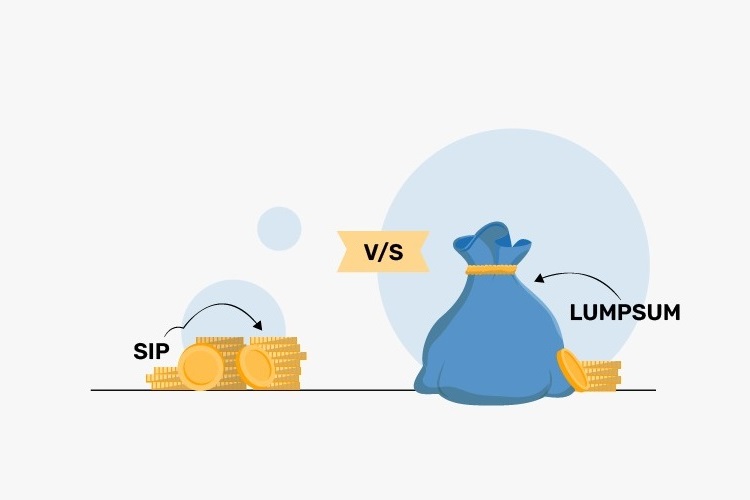Equity mutual funds, which invest in a basket of company stocks, have the potential for significant capital appreciation over the long term. This makes them attractive to investors seeking to build wealth over time.

However, equities are inherently volatile. Returns can fluctuate widely in the short term depending on the performance of underlying company stocks, market trends, investor sentiment, and other factors.
This could lead investors to wonder: which is a better investment route for equity investments, lumpsum or Systematic Investment Plans (SIPs)?
The answer – as with all investment-related decisions – is subjective. Both investment types have different advantages when it comes to navigating volatility, optimizing return potential and mitigating risk. The better investment route, therefore, would depend upon an individual’s investment objectives, market conditions and risk appetite.
Understanding SIP and lumpsum
Lumpsum involves investing a sizeable amount in one go. SIP, meanwhile, is an affordable investment route wherein investors can set aside a fixed amount and invest it in pre-determined intervals – daily, weekly, monthly, quarterly and so on – into the scheme of their choice.
Advantages of Lumpsum
There are two main reasons why equity funds are suited to long investment horizons (five-seven years or more). These are: tiding over volatility and leveraging the power of compounding.
Regarding volatility, a long horizon allows the investment to ride out peaks and troughs in the market. Over longer periods, the impact of short-term volatility may diminish, and investors may capture the growth potential of the market.
The power of compounding, meanwhile, can accelerate the potential growth of an investment over time. Compounding happens when the potential returns on an investment are reinvested and go on to generate further returns. With time, this can have a multiplier effect.
Lumpsum investments can potentially better optimise the power of compounding when compared to SIPs, when market conditions are favourable. This is because returns are generated on the entire investment amount rather than on steadily increasing instalments.
This can lead to potentially higher returns in a rising market environment.
Lumpsum investing may thus be suitable for investors with a higher risk tolerance who are comfortable with market volatility and have the capacity to invest a large amount in one go.
Advantages of SIP
When it comes to risk mitigation, SIPs may offer an advantage over lumpsum through the phenomenon of rupee-cost averaging. SIP investors put in a fixed amount regardless of market conditions, so they end up buying more units when markets are down (reflected in stock prices and therefore low Net Asset Value) and fewer when markets are up. Over time, this can lower the per-unit price of an investment, which can optimise return potential.
Rupee-cost averaging enables investors to leverage market volatility without having to time the market, because they end up buying more when prices are low, putting them in a position to benefit from a potential resurgence.
SIP investments also earn compounding returns. However, compared to lumpsum, the base amount (on which returns are generated) grows slowly with each investment.
To sum up, when markets are up, lumpsum investing may yield potentially better and quicker results. However, SIP is a more affordable route to equity investing because investors can set aside small amounts regularly. Moreover, rupee-cost averaging can help mitigate some of the risks related to market volatility.
Investors who can afford to invest a large sum in the right market conditions and have a high risk tolerance may prefer lumpsum investing. Investors who want to make disciplined and consistent investments over time, without having to track or time the markets, may prefer SIPs.
Note: Mutual Fund investments are subject to market risks, read all scheme related documents carefully.



